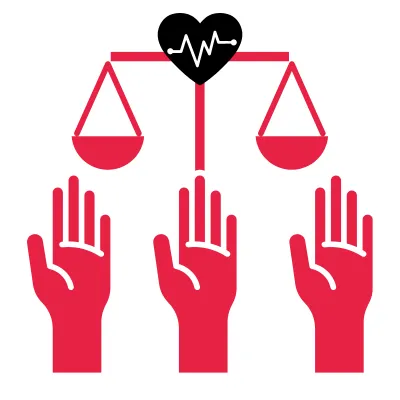Picture this: the lights of Las Vegas, the buzz of innovation and the thrill of attending CES. It’s where the world (literally, the world!) gathers to witness the future of technology. But, beyond the glitz and glam, there’s an issue that demands our attention. There is a lack of fairness when it comes to discussing innovations at CES. As the Founder and CEO of Better Together, a communications agency committed to making an impact I couldn’t help but notice the stark contrast between the promise of innovation and the harsh realities faced by many.

Placing Equity at Center Stage
Innovation should provide individuals with hope, a force for good that improves lives and promotes fairness. In reality, this often falls short. This was my first time at CES and there were hundreds of established and start-up companies showcasing advancements in healthcare, digital health solutions and consumer technology. This is great and I’m an advocate for innovations, but who truly benefits?
Addressing the Digital Health Divide
Let’s consider health as an example. It’s undeniable that people worldwide are now prioritizing their mental and physical well-being. The demand, for mobile and flexible care solutions is rising and technology is stepping up to meet the challenge. However, we cannot turn an eye to the reality that many undersupported communities are being left behind in this era of digital healthcare.
Access to healthcare advancements should not be seen as a privilege, but they are because only a certain demographic has access to these innovations. How can we expect those who are undersupported to take control of their health when they don’t even have access to the basic tools and information they need? The communications field must raise awareness and advocate for access to health solutions.
A Tale of Two Worlds
During my time in Las Vegas attending CES, I couldn’t help but observe the contrast between the innovative technology displayed throughout the numerous conference halls and the harsh realities outside. We visited a hospital only to witness a healthcare system in disarray. Homeless individuals were resorting to eating from trash cans in the hospital, a woman with COVID set in the waiting area for 24+ hours without care while one of my colleagues waited over six hours without getting an opportunity to see a doctor. She was simply sent home. I suppose this is no surprise since Nevada is ranked 42nd out of our 50 states in overall health outcomes.
This striking disparity between the cutting-edge healthcare innovations showcased at CES and the basic healthcare needs of the communities across the country highlight how urgent it is to prioritize equity. Innovation should not exist in isolation; it should catalyze change and fill the divide between those who need it the most and those who have the privilege of experiencing those innovations at CES.
CES 2024 showcased advancements, but it also reminded us of the remaining work ahead. As a communicator, I bear a responsibility to shift the narrative and prioritize equity, in discussions about technology and progress. We must ensure everyone regardless of their background or circumstances can benefit from tomorrow’s innovations.
To effectively convey the significance of fairness in technology to both consumers and technology companies, requires a multi-faceted approach.
- It’s crucial to use storytelling and real-life instances, such as my CES experience to demonstrate the impact of inequity.
- Data and statistics from sources like the World Economic Forum or academic studies must be referenced to shed light on existing disparities.
- Lead and participate in discussions, webinars and conferences that bring together stakeholders from all backgrounds to promote awareness and meaningful conversations.
- Collaborate with influencers and thought leaders who advocate for fairness in technology so they can amplify the message.
- Collaborate with technology companies to integrate equity into their mission statements, corporate social responsibility initiatives and product development to drive transformations.
Ultimately, our ability to bridge the gap between innovation and equity will determine whether we perpetuate a cycle of capitalism and privilege or pave the way, for a fair future. Let’s work together to ensure that the potential of innovation truly reaches everyone. All together we can achieve much more.



